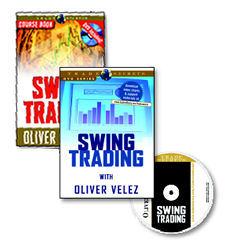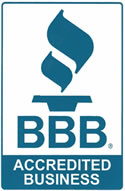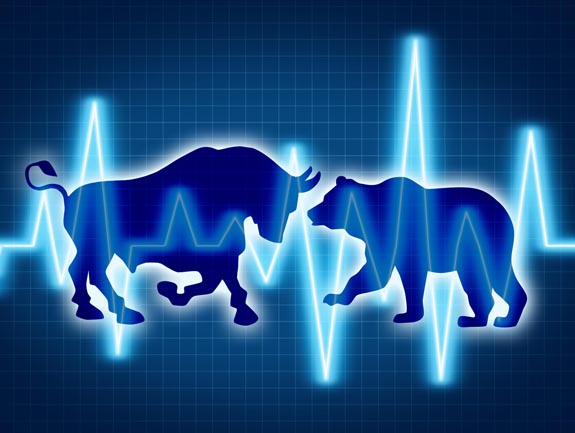.jpg)
Follow
Us:    
|
Don’t Miss Wendy Kirkland...
TODAY!
Join Avant-Garde Trading with special guest Wendy Kirkland for an educational webinar. The self-made trader and financial author will discuss how she trades the market.
Date: Wednesday, August 2, 2017
Time: 3:30pm CDT
Discussion Topics: Winning Secrets From A Professional Option Trader
As an added bonus ALL attendees will receive a free giveaway courtesy of Wendy!
Space is limited
Register Now

|

OLIVER L. VELEZ has been an active trader for over 2 decades. He is the founder and CEO of Velez Capital Management, LLC, one of the fastest growing private trading firms in the country.
Mr. Velez has personally trained more than 60,000 traders, individual investors, and institutional investors and has traveled the globe extolling the virtues of trading for a living. He is the co-founder and former CEO of Pristine Capital Holdings, Inc. which he grew into a global brand by serving more than 88,000 traders and investors around the world. Barron’s, Forbes, and Stocks & Commodities have all at one time rated his company the #1 educational trading firm.
Oliver L. Velez has been featured as a trading expert on CNBC, CBS, Bloomberg, and FOX News and in publications including the New York Times, Wall Street Journal, Barron’s, Forbes, and Stocks & Commodities, to name just a few. Dow Jones called him “the messiah of trading.” As a Wall Street “insider,” Mr. Velez has personally mentored some of the nation’s biggest and most successful traders.
 |
Oliver Velez –
former Wall Street insider,
best selling author, and
internationally recognized
trader announces…

SWING TRADING
The Golden Secret of Price,
Time and Market Symmetry
You can know when and where price will turn in every market. Short-term moves and turning points can be pinpointed – absolutely!
Discover the price and time forces which propel and even drive the market each trading day. These forces are nothing less than amazing. There are rhythmical, natural patterns that occur an astounding 80% - 90% of the time in virtually every stock and currency markets’ movements.
In other words, 80%-90% of the time we know where the market is likely to top and bottom. Precisely. Trading with up to 90% plus win rates – as you’ll see inside – is no accident.
This secret – the secret to becoming a millionaire – lies within a powerful and shocking new book and DVD.
Learn More About
Swing Trading
|
|

Better
Business Bureau
 |
|
Click on authors name
to learn more
|
| |
|
|
One of the scariest things on the Street is not the fear of war, concerns over stretched valuations, or even poor economic numbers.
It’s Amazon.com.
The very idea that it could encroach entire industries has already led to panic-induced sell-offs. For example, when Amazon announced it would buy Whole Foods, grocery stocks – like Costco (COST), Supervalu (SVU) and Kroger (KR) took a hit on fears the behemoth online retailer could dominate the space.
If you know how to spot fear, you have an opportunity to capitalize on it. It’s how Warren Buffett, Baron Rothschild, and Sir John Templeton made so much money, too. In this week's edition, we discuss how you can spot fear, and use it to your advantage.
Lee Gettess supplies the next piece with his weekly video clip covering his bond and S&P market expectations for the week.
Then, Inside Trading brings us Oliver Velez who explains the concept of knowing when to react when a stock declines.
Last, Chris Verhaegh wraps up with his PULSE Options Weekly Newsletter.
Enjoy!
Adrienne LaVigne
TradeWins Publishing
 |
|
The Amazon Fear Factor: Three Ways to Profit
by
TradeWins Publishing
One of the scariest things on the Street is not the fear of war, concerns over stretched valuations, or even poor economic numbers.
It’s Amazon.com.
The very idea that it could encroach entire industries has already led to panic-induced sell-offs. For example, when Amazon announced it would buy Whole Foods, grocery stocks – like Costco (COST), Supervalu (SVU) and Kroger (KR) took a hit on fears the behemoth online retailer could dominate the space.
COST plummeted from $180 to $150 alone. It’s just now recovering. KR fell from $30 to less than $21. SVU fell from $4.10 to $2.90. However, fear would lead to opportunity. Most of the grocery stocks are now rebounding well off lows.
SVU for example is now up to $3.70 weeks after pricing in the fear.
Just last week, stocks like Home Depot (HD), Whirlpool (WHR), and Lowe’s (LOW) began to fall apart on news that Amazon would begin to sell Sears’ Kenmore-brand appliances. As a result, nearly $13 billion was wiped off of Lowe’s Best Buy, Whirlpool and Home Depot’s stocks. All because traders believed Amazon was about to invade and take over the appliance market. However, all it really did though was create opportunity to buy the mentioned stocks on the cheap.
LOW is already beginning to recover.
Then it happened again. Rumors surfaced that Amazon.com would enter the realtor space, and potentially knock Zillow Group (ZG) off its ledge. In fact, on that rumor alone the stock fell from $47 to $44. It’s now recovering.
The Amazon Fear Factor
|
Lee
Gettess' Market Sense
by Lee Gettess
Lee
Gettess is a top trader who is excited
to bring you his video newsletter.
Each week, Lee will share his predictions
on what he anticipates from the bond
and S&P markets.
Watch
Video
|
Knowing When to React
by
Oliver Velez
The following
is an excerpt from Oliver Velez's Swing Trading Home Study Course
Now this may sound very basic to you, but this very simple concept gives you the ability to perform better than 98% of the so-called-professionals out there. The $64,000 question every single day in the market is how do I know when a decline is an opportunity, or when a decline is a reason for me to run for the hills? Isn’t that the prevailing question? Aren’t entire television shows dedicated to that one answer?
One guy says you should buy because the stock is going higher; another guy says no - the stock is completely shot, there is no more momentum. The two guys are battling on this one question. Is the decline in the stock an opportunity to buy or is it the first sign of trouble?
This concept answers the question. If the stock has made a new high and the decline is falling from a new high, that decline is buyable. It is not a reason to take flight. It is not a reason to get nervous. It is a buyable decline. The same is true in reverse.
With this one simple, basic concept you now have the ability to hold your very own CNBC, buy, hold, or sell session. Imagine taking your first call and John from Wichita says, “My broker says I should buy WXYZ. Do I buy it, sell it, or hold it?”
Knowing When to React
|
PULSE Options Weekly Newsletter
by Chris Verhaegh
The following is an excerpt from Chris Verhaegh's PULSE Options Weekly Newsletter
Every week Chris publishes his “PULSE Options Weekly Newsletter”. The following is from his most recent issue.
First Things First
Earnings Season continues this upcoming week as evidenced by our short list of stocks releasing their earnings next week:
Tuesday, August 1
Before the Open: Pfizer (PFE), Under Armour (UA)
After the Close: Apple (APPL), FireEye (FEYE), Herbalife (HLF)
Wednesday, August 2
Before the Open: Humana (HUM)
After the Close: Occidental Petroleum (OXY), Tesla (TSLA)
Thursday, August 3
Before the Open: Yum! Brands (YUM)
After the Close: El Pollo Loco (LOCO), Shake Shack (SHAK), Yelp (YELP)
But a quick examination of the list above shows that there is probably only two stocks releasing their Earnings next week which have a remote chance of moving the market as a whole. And I’m not referring to any of the Fast Food Chains releasing near the end of the week.
While Apple (AAPL) and Tesla (TSLA) both have the ability to send reverberations through the entire Stock Market, the true biggest event scheduled this upcoming week is Friday’s “Jobs” report.
To Learn More Click Here
|
|